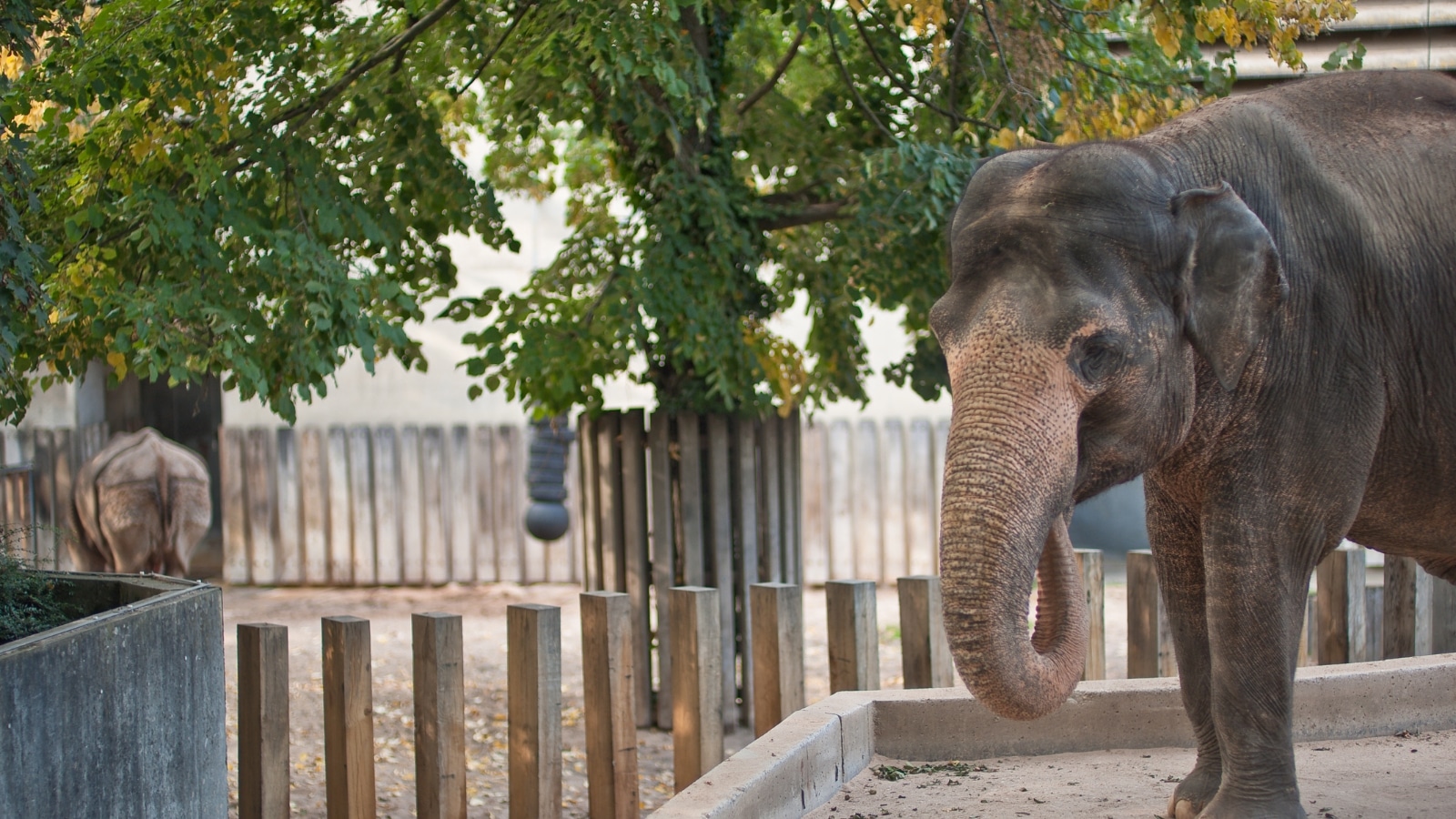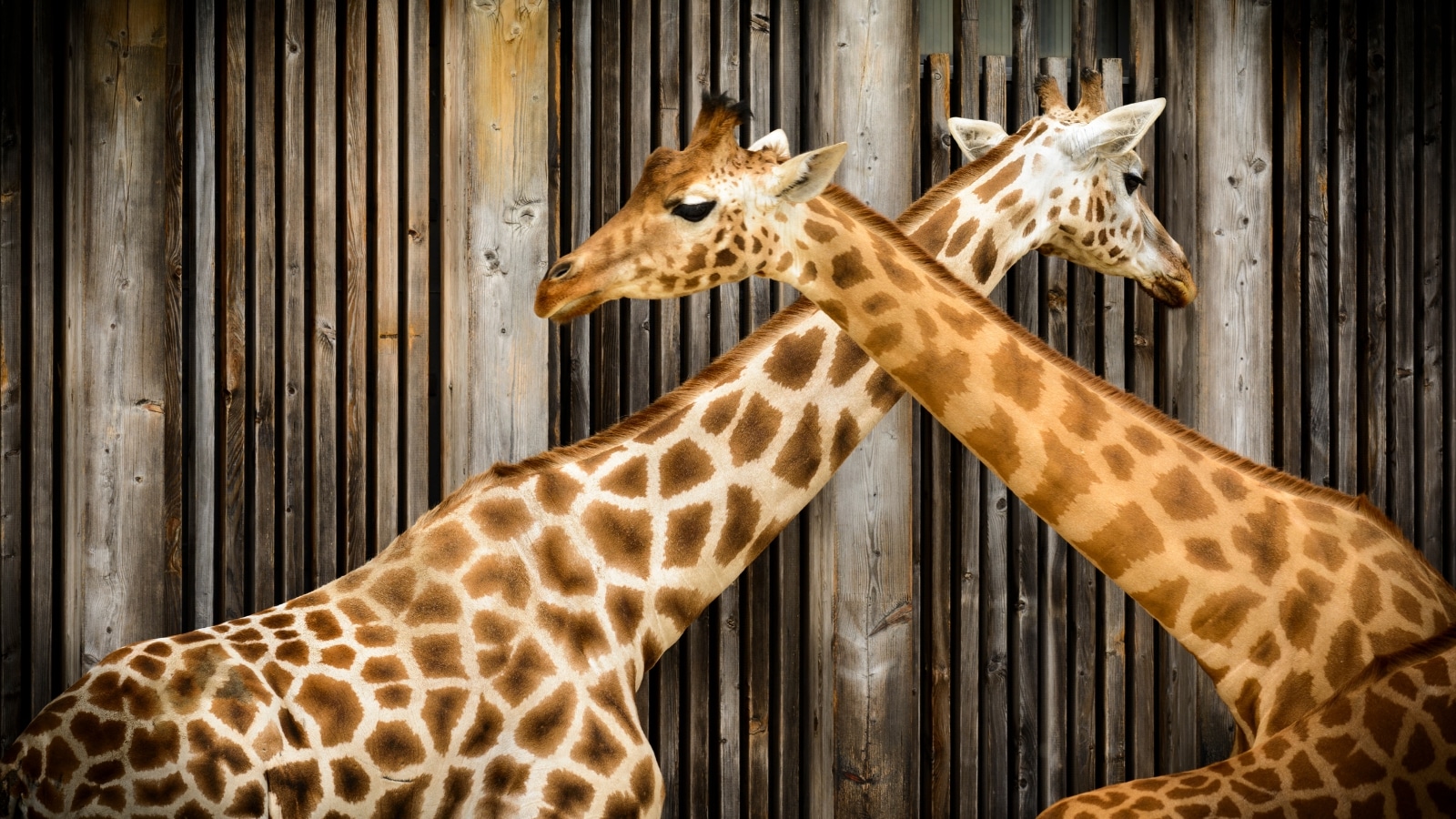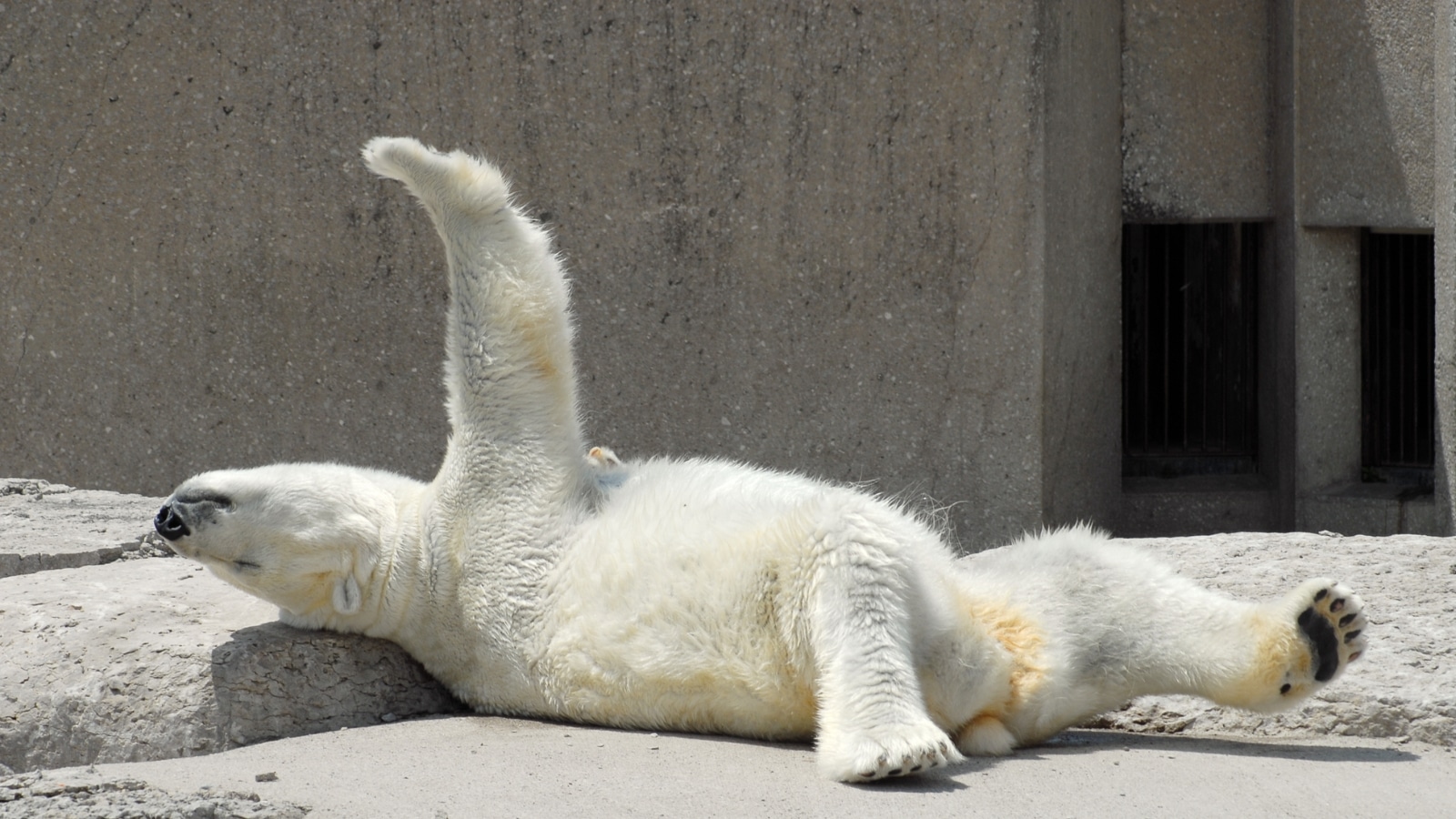Not a day goes by without one of the world’s approximately 10,000 zoos announcing the birth of a captive-born resident. From elephants to rhinos, these birth announcements are invariably accompanied by the bold claim that this new baby, born into captivity, is helping to secure the future of their species. To celebrate World Wildlife Day 2023, which every year falls on March 3, Born Free USA’s Programs Director Liz Tyson-Griffin discusses the issues related to wild animal captivity and what conservation efforts should really look like.
—
Wild Animal Captivity
In February 2023, a rhino was born at a zoo in Kansas. The zoo owner stated in the press that birth helps in “preserving species who are on the brink of extinction.” Another article, celebrating the birth of twin elephants in Syracuse, New York, in November 2022, said that “their birth helps boost the endangered species’ population.”
When Amur leopard cubs were born in St. Louis Zoo in May 2022, zoo staff were quoted as saying: “There are so few of these rare big cats left in the world and each birth is extremely important for the survival of the species.”
Likewise, a birth announcement for a giraffe born at the Virginia Zoo in October 2022 included the claim that, because the species is endangered: “The birth of this newest calf is especially important.”
The list goes on.
Zoos have long claimed that breeding wild animals in captivity serves to guarantee the survival of the species, to the extent that the Association of Zoos and Aquariums (AZA) coordinated breeding programmes are named Species Survival Plans (SSP). The purpose of the plans is “a cooperative animal management, breeding, and conservation effort that works to ensure genetically diverse, self-sustaining populations of more than 500 species of animals.”
For AZA-accredited zoos and aquariums, conservation is “a priority” and “a key part” of their mission to save species from going extinct. But despite both overarching and specific examples of zoos claiming to save species from extinction, animals held in zoos have little to no opportunity for release to the wild. Rather than the proverbial “ark” saving species from extinction, zoos are better described as silos for species held captive while wild populations continue to fight for their very survival. Zoos claim to mitigate species decline but, in fact, both contribute to it and distract from the very real threats facing free-living wild animals. Rather than breeding endangered animals for eventual release back into their natural environments, zoo breeding programmes breed animals to stock their public exhibits.
You might also like: Breeding Programmes For Endangered Species: Do They Really Help?
Elephants
Elephants in zoos are a prime example of animals who suffer, both from a conservation and a welfare perspective, when held captive in zoos.
Research carried out by Born Free and published in 2022 confirmed elephants have been captured from the wild to stock zoos exhibits in the U.S. as recently as 2016. For the captive Asian elephant population alone, it was calculated in 2000 that zoos in North America would need to import four elephants per year to maintain the population at the current level. Put simply, deaths of elephants in zoos outnumber births. As a result, zoos are net consumers of elephants rather than guardians of them as the industry would have us believe.

Not only do zoos impact wild populations of elephants by taking them from their natural home but elephants kept in zoos also suffer poor welfare as it is impossible for the captive environment to meet their extremely complex and specific needs. Captive elephants, particularly calves, are more likely than their free-living counterparts to die from Elephant Endotheliotropic Herpesvirus Haemorrhagic Disease (EEHV-HD), a disease so deadly that it is the most common cause of death for infant elephants in zoos. While EEHV-HD is latently carried by both captive and free-living populations, captive deaths are proportionally much higher than those in free elephant communities.
Given the mortality rates of captive elephants, it is disturbing if not surprising to learn of the desperate measures zoos take to force elephants to breed. An example is Chai, an elephant who died in 2016 at Oklahoma City Zoo. Chai was forcibly inseminated 112 times in her lifetime. The process required her to be anchored by her feet and have a three-foot hose inserted into her reproductive tract. The training for her to accept this invasive procedure took two years. When all attempts at forced insemination were unsuccessful, Chai was moved from Woodland Park Zoo, where she was living at that time, to Dickerson Park Zoo in Missouri. The move went ahead in 1998 despite the Missouri zoo experiencing an outbreak of EEHV-HD and the risk that Chai could bring it back with her. Despite Chai being attacked and injured by the other elephants at the Missouri facility, and losing about 1,300 pounds during the year she was away from her home zoo, she returned to Woodland Park pregnant. Her calf Hansa died from EEHV-HD at just seven years old.
You might also like: 12 Incredible Facts About Elephants
Giraffes
Other zoo favourites, such as giraffes, also suffer terribly in zoos, while their free-living counterparts are threatened by habitat loss and fragmentation and abhorrent practices such as trophy hunting. In North America, at least 103 zoos hold close to 600 giraffe captive. For giraffes, the world’s tallest land mammal, captivity presents multiple welfare issues, not least because of their huge size, climactic needs, the natural tendency to roam great distances, and their adaptation to spend around 60% of their time foraging.
The simple act of keeping them captive can kill giraffes; multiple individuals have died because of the enclosures they are kept in. For example, in 2010, a giraffe died at Cincinnati Zoo when her horns got entangled in netting, and a three-year-old giraffe at Peoria Zoo got his neck caught in the fork of a tree in the same year. He died in front of visitors after flipping over trying to free himself. In 2015, a giraffe died after running into the perimeter fence of her enclosure in one zoo, and at another zoo, a baby giraffe died after their neck became entangled in wire. In 2016, a giraffe collapsed after getting his head caught between two posts at Zoo Miami, and the following year, another giraffe was found dead after getting caught up in a toy-like piece of equipment in another facility. In February 2023, a giraffe died after getting his neck caught in a gate at Seneca Zoo in New York State.

Giraffes would naturally spend around a third of their day walking. Their natural range has been calculated to be between 1,326 and 127,012 acres. In contrast, the average zoo enclosure for giraffes in US zoos is 1.2 acres. The smallest giraffe enclosure in the country is just 0.17 acres and is found at the Los Angeles Zoo. In addition, giraffes spend a large part of their day feeding on leaves and stems of trees and shrubs and rumination is their dominant activity at night. As such, feeding is not just of nutritional importance to them, but also behaviourally significant. Even with the best of intentions, it is impossible for zoos to provide sufficient browse to fulfil nutritional and behavioural needs, which leads to both physical and mental health issues for the animals. Physical health issues include significant weight loss and dental issues, among other conditions. In Europe, a survey revealed that at least 48% of giraffes were in poor to emaciated body condition at the time of death. Mental health issues for captive giraffes often manifest in stereotypic behaviours such as bar biting, licking non-food objects, or pacing. In a survey of giraffes in AZA zoos, 79.7% of them demonstrated stereotypes.
Polar Bears
Polar bears held captive in zoos are one of the more extreme examples of the way in which animal captivity fails to provide adequate living conditions for wild animals as well as the way in which zoos not only fail to address the very real threats facing free-living animals but also contribute to the very issues they claim to ameliorate.
A polar bear’s range can be up to tens of thousands of square miles, yet a 2003 report confirmed that a typical zoo enclosure for a polar bear was 0.23 acres. This is one millionth the size of their natural range – around the size of an Olympic swimming pool. When the polar bears’ aquatic range is considered in addition to the land range, the picture for captive bears becomes altogether bleaker. Polar bears are reportedly capable of swimming 427 miles over nine days, yet US regulations recommend a water surface area of just 97 square feet (9 square metres) and a depth of just 5 feet (1.5 metres).

You might also like: 5 Facts About Endangered Polar Bears: Diet, Threats, and Conservation
In addition to the welfare impacts of keeping polar bears in zoos, the somewhat ironic truth is that keeping these bears in captive environments negatively impacts climate change – the bear’s main threat in their natural habitat. The construction of the polar bears’ enclosures, the water treatment, climate control, food production, and overall zoo infrastructure all create significant emissions that impact the environment negatively. Indeed, the carbon footprint of zoos, in general, is huge – something that is rarely acknowledged despite zoo claims that they exist to serve conservation goals.
The Truth About Animal Captivity
The truth is that, despite bold claims of serving conservation, saving species from extinction, and educating future generations of conservationists, the primary purpose of zoos is to hold animals captive for entertainment. People enjoy seeing wild animals and zoos are a convenient and accessible way to do that. Almost without exception, animals born in zoos will die in zoos – they will not be released into the wild. It is time we recognise that holding wild animals captive for life and over generations is not only harmful to the welfare of the animals themselves but is also a dangerous distraction away from the true threats facing these animals in their natural habitats.
Instead of supporting zoos and perpetuating the lifelong captivity of animals, true conservation efforts, which focus on protecting animals in their natural ranges and deal meaningfully with the often complex issues facing free-living animals, are where our efforts should be focused.
This article was written by Liz Tyson-Griffin, PhD, Born Free USA Programs Director
—
Sources:
Bashaw, M. J., Tarou, L. R., Makia, T. S. and Maple, T. L. (2001). “A survey
Clauss, M., Rose, P., Hummel, J. and Hatt, J-M. (2006). “Serous fat atrophy and other nutrition-related health problems in captive giraffe (Giraffa camelopardalis) – an evaluation of 83 necropsy reports.” In: Congress of the European Association of Zoo and Wildlife Veterinarians. Budapest: EAZWV, pp. 233-235.
Leuthold, B. M. and Leuthold, W. (1978). “Daytime activity patterns of gerenuk and giraffe in Tsavo National Park, Kenya.” East African Wildlife Journal, 16, pp. 231-243.
About the Author:
Dr. Liz Tyson-Griffin is Born Free USA’s Programs Director. She has helped animals across the globe. She helped to establish the very first locally-run sterilisation program for street dogs in the Middle East; worked with indigenous communities in the Colombian Amazon to end the hunting of wild primates; ran a UK charity campaigning to end the exploitation of animals in circuses and zoos; and helped design a new rehabilitation complex for rescued monkeys at Born Free’s sanctuary in Ethiopia, Ensessa Kotteh. In 2018, she earned her doctorate in Animal Welfare Law.
Liz recently published her book, Licensing Laws and Animal Welfare: The Legal Protection of Wild Animals, with Palgrave MacMillan/Springer Nature. The book outlines the findings of her doctoral research, which is the most comprehensive study of the legal protection of wild animals in English zoos carried out to date.
You might also like: Will the 2030s Be the Decade for Global Biodiversity Conservation?
"captivity" - Google News
March 03, 2023 at 07:01AM
https://ift.tt/c3xLHDS
World Wildlife Day 2023: Animal Captivity Is A Dangerous ... - EARTH.ORG
"captivity" - Google News
https://ift.tt/s9XTEhi
https://ift.tt/ViR6A0f
Bagikan Berita Ini
















0 Response to "World Wildlife Day 2023: Animal Captivity Is A Dangerous ... - EARTH.ORG"
Post a Comment